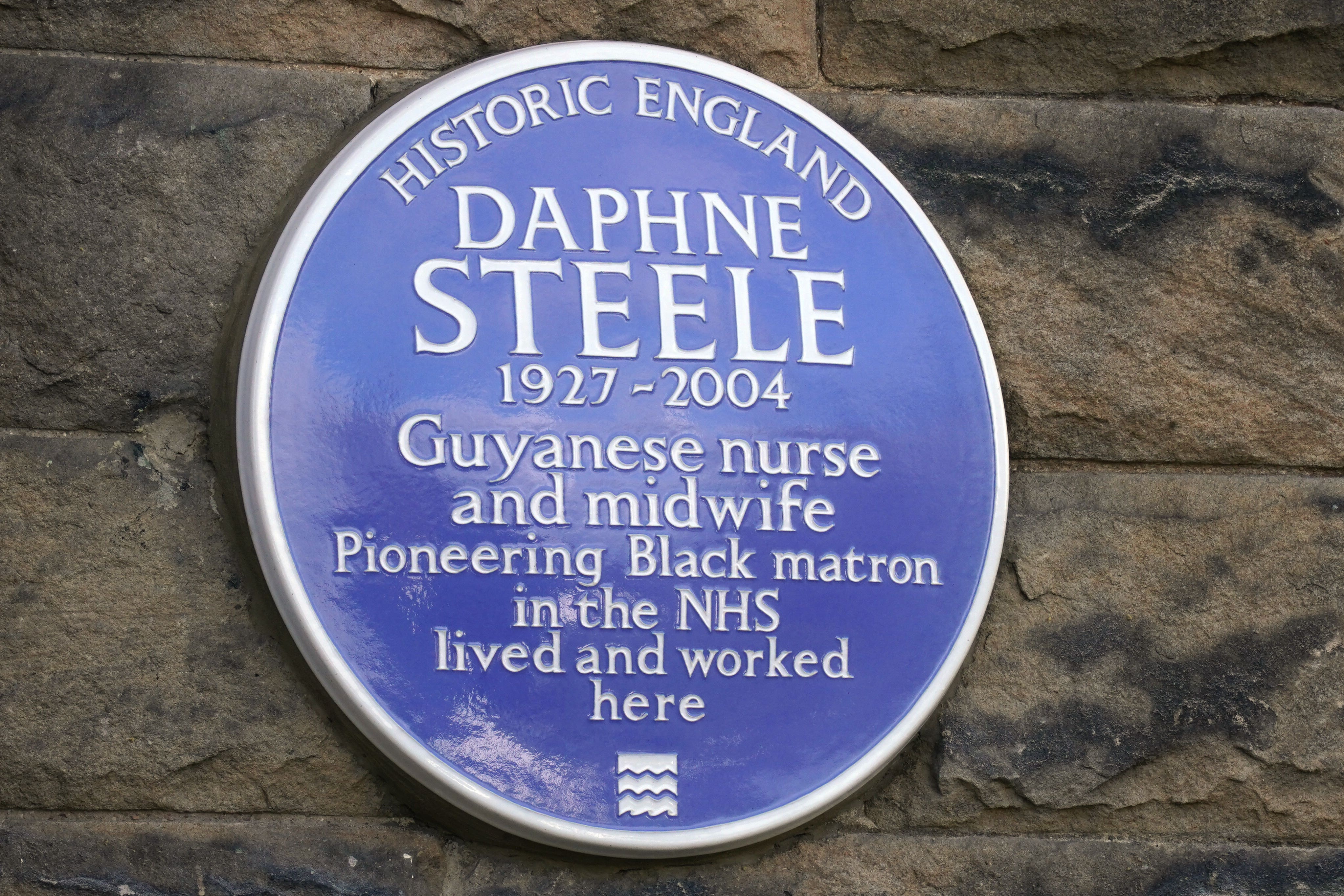First official blue plaque outside London honours NHS matron
The next two plaques outside the capital will be dedicated to Beatles star George Harrison and 20th century ceramist Clarice Cliff.

The woman credited as the “first black matron” in the NHS has had her achievement marked with a blue plaque following an expansion to the scheme.
Daphne Steele is being honoured at the former St Winifred’s maternity home in Ilkley, West Yorkshire with the first official blue plaque outside London.
The plaque reads: “Daphne Steele. 1927-2004. Guyanese nurse and midwife. Pioneering black matron in the NHS lived and worked here.”
Beatles star and humanitarian George Harrison and 20th century ceramics designer Clarice Cliff, who made quirky Winston Churchill jugs and colourful tableware, will be the next to be recognised with a plaque.
Robert Steele, Ms Steele’s son, said: “My mother saw herself as a nurse and midwife.
“As far as she was concerned, she was just getting on with her job. She would be speechless, mind-blown, to see a plaque dedicated to her and to know that she had made such a difference to so many people.”
His mother, originally from Guyana, arrived in the UK in 1951 and enrolled in a nursing course at St James’s Hospital, Balham, South London, graduating two years later.
She then undertook midwifery training in 1954 and worked in America, Oxfordshire and Manchester.
Ms Steele became a matron in 1964 at St Winifred’s maternity hospital in Ilkley with a reported salary of £1,230 per year (today’s money £20,733).
Chief nursing officer, Dame Ruth May called her “an inspiring woman who no doubt paved the way for many other nurses and midwives to follow in her footsteps”.
She also said: “Daphne had a remarkable career in nursing, midwifery and as a health visitor, and like so many from the Windrush generation, she made an enormous contribution to the NHS.”
When St Winifred’s closed in October 1971, Ms Steele found a new job working in Wharfedale children’s hospital in Menston and then retrained as a health visitor at Leeds University.
She also worked as a health visitor in Ilkley and Bingley and recalled to her local newspaper in 2001 that after her appointment as a matron she received “about 350 letters from around Britain and around the world”.
The blue plaque scheme is delivered by Historic England on behalf of the Department for Culture, Media and Sport (DCMS).
Arts and heritage minister Lord Parkinson of Whitley Bay said Ms Steele “delivered hundreds of babies a year” and paved “the way for so many others from a wide range of backgrounds to play their vital role in that cherished national organisation”.
“I am delighted that she can be commemorated with the first official blue plaque outside London, and hope her story will continue to inspire people across Yorkshire and far beyond,” he added.
Ms Steele along with Harrison and Cliff’s plaques will be part of a new national scheme, made possible thanks to a change in the law last year.
In early summer 2024, the public can submit ideas of who to commemorate in their local area.
Duncan Wilson, chief executive of Historic England, called Ms Steele “a “quiet revolutionary” who, nearly 60 years ago, changed history when she became the first black matron in the NHS”.
“Our national blue plaques scheme is a fantastic opportunity to tell the stories of inspirational people, like Daphne, who have helped make the world a better place,” Mr Wilson added.
“Blue plaques are well known and loved. They help people and communities feel pride and connection to their local and national heritage.”
For the past century and a half, the official blue plaques scheme has been London-only as local initiatives deliver the commemorations locally.
The London blue plaques scheme began in 1866 and had been run by English Heritage since 1986.
The official scheme, announced by DCMS in September, will be run by Historic England across England.
Bookmark popover
Removed from bookmarks